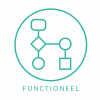Technical Design Lab2patient V1.0.0-beta.2
|
|
'IsUitbesteed' and POC-test are not yet part of the Technical Design (TO). In the Functional Design (FO) they have already been described. These elements will also be included in another release. |

For an overview of all current documentation see information standard lab exchange main page
Inhoud
1 Introduction
This is the technical design (TO) for the information standard (IS) Lab2patient. This TO must be used together with the IS functional design, see functional design Lab2patient 1.0.0-beta.2. The data exchange format used in this version is: FHIR R4.
1.1 Support
For questions, feedback, or change requests, please contact our support team at Nictiz Servicemanagement.
1.2 Boundaries
This information standard may overlap with other standards related to identification, roles, and geographic classifications, requiring careful alignment to ensure consistency and avoid duplication. For more information, see functional design Lab2patient 1.0.0-beta.2.
1.3 Prerequisite knowledge
The following background information is required for understanding this TO:
- The functional design Lab2patient 1.0.0-beta.2 accompanying this TO.
- The data exchange format FHIR R4, which you can find here:
2 Relationships
The diagram below shows the relationships between different FHIR profiles. The arrows indicate an “is referenced in” relationship.
For example, Patient → Laboratory Test means that the Patient is referenced within the Laboratory Test resource.
3 Components
HL7 FHIR is used to accommodate the Dutch Clinical Information Models (zibs) used in the IS.
3.1 HL7 FHIR R4
|
Nictiz uses the FHIR Packaging mechanism. This conveniently bundles all profiles, terminology, example material and other conformance resources you need into a single archive, which can be downloaded or installed using the appropriate FHIR tooling. This version of the information standard uses the following packages:
Note: packages use Semantic Versioning. Other versions can be used at will as long as they have the same major.minor number or a minor number higher than the stated version. |
3.1.1 Artifacts
The artifacts of the information standard are presented in the following table:
| zib | FHIR resource | FHIR profile |
|---|---|---|
| HealthcareProvider | Organization | nl-core-HealthcareProvider-Organization |
| HealthProfessional | Practitioner | nl-core-HealthProfessional-Practitioner |
| PractitionerRole | nl-core-HealthProfessional-PractitionerRole | |
| LaboratoryTestResult | Device | nl-core-LaboratoryTestResult.Specimen.Source |
| Observation | nl-core-LaboratoryTestResult | |
| Specimen | nl-core-LaboratoryTestResult.Specimen | |
| Patient | Patient | nl-core-Patient |
| DiagnosticReport | lu-LaboratoryTestResult-DiagnosticReport | |
| ServiceRequest | lu-OrderData |
3.1.2 Examples of FHIR instances
You can find examples of FHIR-instances (filled-in FHIR profiles) in the Nictiz GitHub repository: Lab exchange HL7-mappings repository.
4 Transactions
4.1 Patient retrieves laboratory results in their PGO
4.1.1 Involved actors
| Transaction group | Transaction | Actor | System role code |
|---|---|---|---|
| Retrieve laboratory results (PULL) | Retrieve laboratory results request | Client | LAB-LRR-PGO |
| Retrieve laboratory results response | Server | LAB-LRB-PGO |
4.1.2 Search parameters
| FHIR Search Parameter | Description | FHIR Resource | Example |
|---|---|---|---|
| Retrieve laboratory results (Observation search) | |||
| category | Restrict search to laboratory observations | Observation | GET [base]/Observation?category=http://terminology.hl7.org/CodeSystem/observation-category|laboratory |
| code | Filter by laboratory test code (LOINC/NHG) | Observation | GET [base]/Observation?category=http://terminology.hl7.org/CodeSystem/observation-category|laboratory&code=http://loinc.org|14683-7 |
| date | Filter results based on observation date | Observation | GET [base]/Observation?category=http://terminology.hl7.org/CodeSystem/observation-category|laboratory&date=gt2022-03-12&date=lt2022-06-07 |
| Retrieve latest laboratory results ($lastn operation) | |||
| $lastn | Retrieve most recent lab results using the $lastn operation | Observation | GET [base]/Observation/$lastn?max=5&category=http://terminology.hl7.org/CodeSystem/observation-category|laboratory&code=http://loinc.org|14683-7 |
| Retrieve related resources | |||
| _include | Include linked resources (Specimen, Patient, Organization) in the response bundle | Observation | GET [base]/Observation?category=http://terminology.hl7.org/CodeSystem/observation-category|laboratory&_include=Observation:specimen&_include=Observation:patient&_include=Observation:performer |



